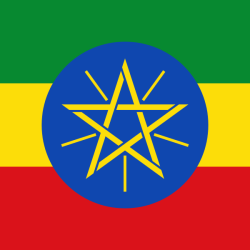Kenya’s population trends from 1897 to 2019 with this full list of census years and population data. Explore growth insights, historical facts, and FAQs.
Kenya Population by Census Years: A Look at Growth from 1897 to 2019
Kenya’s population has undergone an extraordinary transformation over the last century. From just 2.5 million people in 1897 to nearly 50 million by 2019, the country’s growth trajectory tells a powerful story of change, development, and demographic evolution. This article provides a comprehensive list of censuses in Kenya, showcasing the population recorded in each census year and offering deep insights into the socio-economic and political milestones that have influenced this growth.
📅 Complete List of Kenya’s Censuses with Population (1897–2019)
Below is a detailed table of all official census years in Kenya along with the corresponding population figures:
| Census Year | Population (Millions) |
|---|---|
| 1897 | 2.5 |
| 1948 | 5.4 |
| 1962 | 8.6 |
| 1969 | 10.9 |
| 1979 | 15.3 |
| 1989 | 21.4 |
| 1999 | 28.7 |
| 2009 | 37.7 |
| 2019 | 47.6 |
📈 Analyzing Kenya’s Population Growth Over the Decades
Kenya’s Early Population: Pre-Independence Trends (1897–1962)
The first population estimate dates back to 1897 during the British colonial period. At that time, Kenya had an estimated population of 2.5 million. By the 1948 census—the first modern census conducted under colonial rule—the population had more than doubled to 5.4 million.
In 1962, just a year before independence, the population was recorded at 8.6 million, reflecting not just natural growth but also improved enumeration practices and settlement structures.
Post-Independence Boom: 1969–1989
After gaining independence in 1963, Kenya saw a notable population boom. The 1969 census showed 10.9 million people, and by 1979, the number rose sharply to 15.3 million—a 40% increase in just one decade.
This period was characterized by high fertility rates, improved healthcare access, and expanded infrastructure, all contributing to population growth.
Modern Expansion: 1999–2019
Between 1989 and 1999, Kenya’s population jumped from 21.4 million to 28.7 million. This era marked urbanization, economic restructuring, and growing youth demographics.
By 2009, the population had surged to 37.7 million, and the most recent census in 2019 placed it at 47.6 million, reflecting rapid urban growth, expanded education access, and improved data collection.
📊 Decade-by-Decade Growth Rates in Kenya
| Decade | Population Growth (%) |
|---|---|
| 1897–1948 | +116% |
| 1948–1962 | +59% |
| 1962–1969 | +26% |
| 1969–1979 | +40% |
| 1979–1989 | +40% |
| 1989–1999 | +34% |
| 1999–2009 | +31% |
| 2009–2019 | +26% |
These growth rates highlight Kenya’s dynamic demographic changes and underline the need for strategic planning in healthcare, housing, education, and employment.
🌍 The Role of Censuses in Kenya’s Development
Censuses in Kenya do more than count people—they shape policies, inform economic planning, and guide resource allocation. Conducted every 10 years, the Kenya National Bureau of Statistics (KNBS) oversees the process, ensuring transparency and accuracy.
Key uses of census data include:
- Electoral boundary reviews
- Infrastructure development
- Healthcare resource distribution
- Education planning
- Monitoring sustainable development goals (SDGs)
🧒 Youth & Urbanization: Key Demographic Shifts
Kenya has one of the youngest populations globally, with over 75% under the age of 35. Coupled with rapid urbanization, this shift presents both opportunities and challenges in:
- Youth employment
- Urban housing demands
- Public transport needs
- Digital transformation
🧠 Frequently Asked Questions (FAQs)
1. When was the first census in Kenya conducted?
The first known population estimate in Kenya was in 1897, but the first official modern census was conducted in 1948 under British colonial rule.
2. How often are censuses conducted in Kenya?
Kenya conducts a national census every 10 years, typically in years ending in “9” (e.g., 1999, 2009, 2019).
3. What was Kenya’s population in the 2019 census?
The 2019 census recorded a total population of 47.6 million people.
4. Which agency is responsible for Kenya’s census?
The Kenya National Bureau of Statistics (KNBS) is the official government agency responsible for conducting censuses.
5. Why is the 1948 census significant?
The 1948 census was the first comprehensive and structured population count in Kenya’s history, setting the foundation for modern demographic tracking.
6. What factors influence population growth in Kenya?
Key factors include fertility rates, mortality improvements, urbanization, migration, and public health advancements.

Looking Ahead to Kenya’s Demographic Future
From 2.5 million in 1897 to 47.6 million in 2019, Kenya’s demographic journey is remarkable. With a youthful population and growing urban centers, the country stands at a critical point where population dynamics will shape its socio-economic path.















